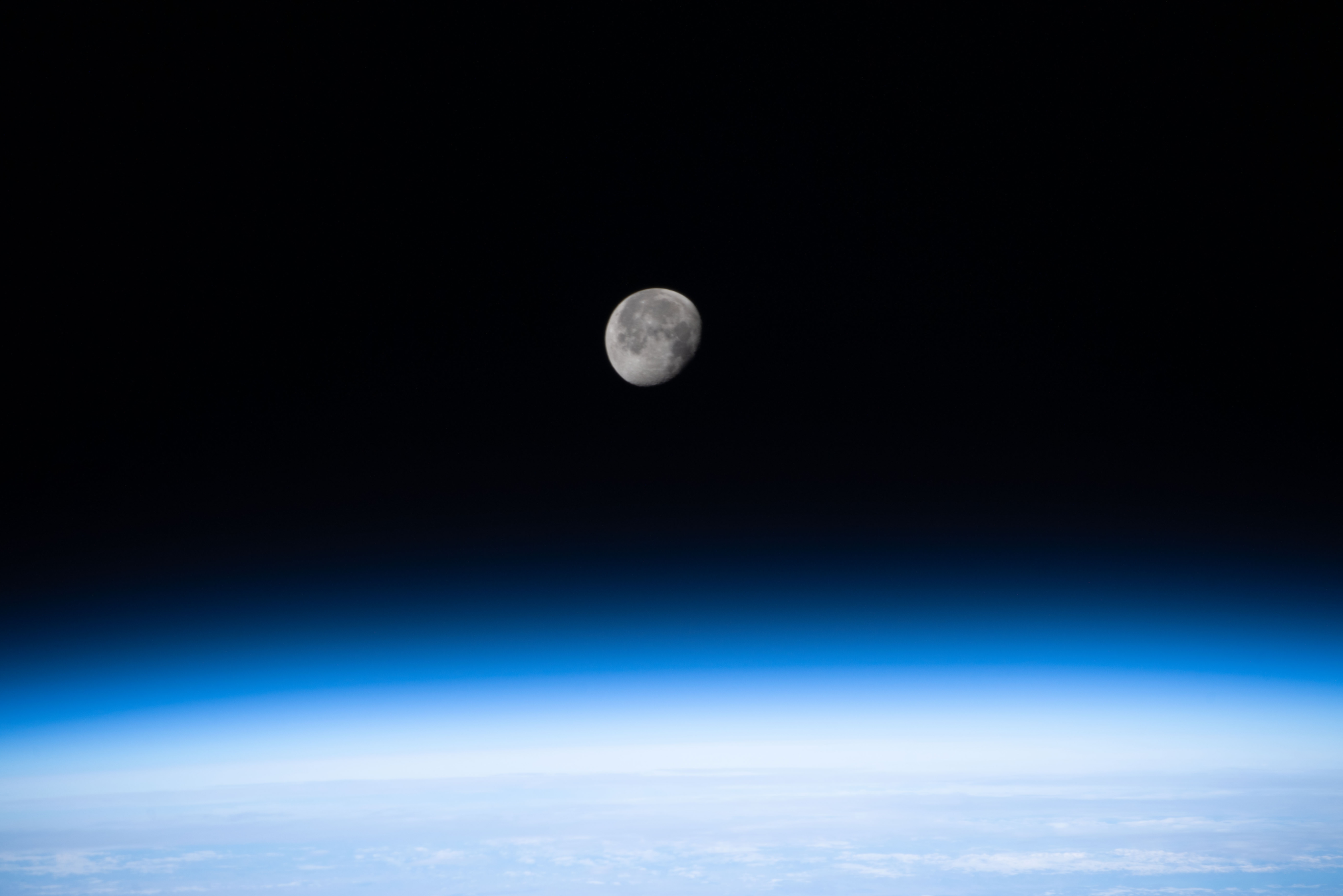Why you should care about opportunities and innovation happening in space, even if you plan to never leave Earth.
It powers your smartphone apps. It delivers essential data to critical industries. It has produced important innovations that are now part of our daily lives. No, it’s not a tech company — it’s the space economy.
The universe is expanding — and so is the space economy.
Morgan Stanley, Citi, and UBS all expect space to be a $1 trillion industry by 2040. Some analysts are even more bullish: Bank of America expects the commercial space market to exceed $1 trillion by 2030, and the Space Foundation anticipates it nearing the $800 billion threshold by 2028.
In 2019, almost all (95%) of the space economy’s $366 billion in revenue came from the “space-for-Earth” market, which includes telecommunications services and Earth observation data. Space-for-Earth opportunities are huge and growing, now that booking a small satellite launch is similar to booking a rideshare — almost like an Uber Pool to low Earth orbit. In the 20th century, NASA and other centralized government agencies were the only ones launching satellites; now, the new industrial base is decentralized, with many different companies making components and instruments for satellites and rockets. The “space-for-space” market is comparatively nascent, and could include activities like asteroid mining, space tourism, in-space manufacturing, infrastructure development, health, and agriculture.
The definitions we offered in 2019 are still relevant in 2024: The original space industry was centralized, national, and aspirational; it was essentially limited to state-run programs and public-private partnerships. In contrast, the new space economy is decentralized, entrepreneurial, and accessible; it’s increasingly diversified and includes players across industries.
Almost any career can be a space career.
In 2021, America’s private-sector space economy alone employed 360,000 people, paying an average salary of more than $141,000 — adding up to $51.1 billion in compensation. Most of these workers are not astrophysicists: More than one-third of the jobs were in manufacturing, and nearly one-quarter were in information, which includes telecommunications and broadcasting.
In 2019, one in five NASA employees (21%) were eligible for retirement. While many older workers will choose to stay in their roles, many will also leave their jobs — and NASA will need skilled workers to keep up with job growth. Many of the highest-profile jobs in space are highly specialized roles that require advanced degrees or special training. But for every astronaut and astrophysicist, the industry needs many more technicians. The James Webb Space Telescope is a great example: One person’s name is on the telescope, but the mission credits more than 300 contributing organizations, with teams focused on a range of functions and components, from heat-resistant materials to origami-style folding.
Gen Z students are increasingly entering trades like plumbing, carpentry, and welding — and they’ll be pleased to find an abundance of job opportunities in the space economy. Electricians, HVAC installers, machinists, and other skilled technicians are in high demand. The same skills that are in high demand across many industries — software engineering, data science, project management, operations, and increasingly, AI — are also critical in the space industry. But the industry needs expertise in many areas, from hospitality and finance to marketing and manufacturing. Many careers can be space careers: Athletic trainers prepare astronauts for the physical demands of space flight; welders manufacture spacecraft; chefs design menus and prepare food; data scientists analyze Earth observation data; botanists create methods to grow plants in microgravity.
Almost any company can be a space company.
Space exploration has long been a source of new innovation; everyday technologies like cordless power tools, laptop computers, and radiant barrier insulation were initially developed for use in space. And companies that make familiar consumer products — including laundry detergent and toothpaste — have found new ways to iterate and improve after testing their formulas in space. Materials science and product engineering continue to be important opportunity areas in the space economy.
You don’t need to have an engineering-focused organization — or even expertise in space — to find new markets in space. Partnerships, an important theme in our recent State of Open Innovation report, are often key to unlocking opportunities in the space economy. For example, SBQuantum — a company with an innovative magnetometer design used in mining — has teamed up with Spire Global; together, they are developing that technology for use in space to measure the Earth’s magnetic field.
Opportunities abound across sectors and industries, but a few areas show distinct promise — and the potential may surprise you.
Climate. Space is already a source of climate data, and experts believe that space will also be a source for climate solutions. Dr. Gordon Roesler, a former DARPA program manager, said that “90% of what we know about climate change, we have learned from space.” Indeed, NASA’s climate research has shaped the world’s understanding of climate change. Now, new missions are using Earth observation data from satellites to plan for mitigation and accountability. For example, MethaneSAT is tracking and analyzing emissions, with the goal of motivating and enabling urgent action.
Health. Keeping astronauts healthy — both physically and mentally — is a priority for space exploration programs, and innovating within the extremes of a space environment can yield new solutions for Earthbound patients. A few months ago, XRHealth sent a virtual reality headset to the International Space Station; astronauts will use the device for mental health therapy. Experimental bioprinting — 3D printing with living cells — in space may help create new options for patients waiting for organ transplants. Scientists at the Translational Research Institute for Space Health (TRISH), a Baylor College of Medicine-led consortium with the California Institute of Technology and the Massachusetts Institute of Technology, are conducting research to solve the challenges of human deep space exploration. The scientific and technological solutions they develop often have diagnostics and treatment applications on Earth.
Agriculture. Space-based sensors collect weather data and high-resolution images, which food growers can use to plan for planting, irrigation, and pest control. NASA’s agriculture programs include satellite crop monitoring data to help farmers make decisions and improve food production. John Deere’s recent partnership with SpaceX provides satellite internet service and precision agriculture technology to farmers in remote areas. But the space and agriculture connection impacts more than just traditional farming methods. Researchers are exploring cultivation in microgravity settings and alternative soils as a way to ensure fresh food for humans on interplanetary missions. And experiments in enclosed-environment growing are opening up new opportunities in hydroponic and vertical farming.
Logistics and transportation. Satellite data is critical for shipping and supply chains that move goods around the globe. DHL is now expanding into space logistics, applying its expertise in Earth-based transport to the challenge of “moving goods beyond our planet’s atmosphere and back.” But satellite data isn’t only helping move supplies; if you’ve ever used GPS for mapping and navigation, you’ve used satellite-based technology. The World Magnetic Model (WMM) — a data model that corrects for the difference between geographic and magnetic poles — is embedded in thousands of systems and used by more than a billion smartphones with mobile navigation apps. Three innovator teams are currently building, integrating, testing, and launching new nanosatellite solutions to produce high-quality geomagnetic data for the WMM.
Regional development and infrastructure. Beyond transportation, satellite data can support building and maintenance of critical infrastructure, including electric grids. For example, Overstory analyzes Earth’s vegetation to help energy utilities prevent wildfires and power outages. Continued exploration and satellite launches require robust regional infrastructure, which makes America’s spaceports — launch and reentry sites in 10 different states — critically important to the growing space economy. And a strong network of manufacturing and production sites will also be key to building the space industrial base. The federal government and regional coalitions see the potential for economic growth: Build Back Better Regional Challenge awardees include groups in South Kansas and West Texas that are creating hubs for aerospace manufacturing.
Earth’s leaders must collaborate to build a thoughtful space economy.
As with any new realm, a failure to consider long-term implications and unintended consequences can lead to disastrous outcomes. By considering connections between people, infrastructure, and environment, we can build a thoughtful space economy that prioritizes equity and sustainability.
Concerns about space junk are just one example of what’s at stake. The United Nations’ Office for Outer Space Affairs has offered “Guidelines for the Long-term Sustainability of Outer Space Activities.” But not all missions follow the guidelines, and sometimes missions that do design for controlled reentry of orbital debris don’t go according to plan. Last month, a piece of space junk damaged a home in Florida.
In the U.S., specifically, government officials have described the “space industrial base” as “tactically strong but strategically fragile.” The federal government has called for greater innovation and investment in several areas, including strategic workforce development. To fully realize the space economy’s potential, we’ll need to inspire, prepare, and employ the space workforce. Career and technical education (CTE) programs in high schools and middle schools can play a big part in introducing students to pathways and helping them build skills for careers in space and on Earth.
The future of the Earth — and space — depend on equitable policies and intentional collaboration. As innovation and economic opportunities continue to grow, space can be a place for international cooperation and shared prosperity. But there’s also potential for space to become the next militarized frontier. Governments, industries, and other stakeholders will need to collaborate on policies that protect space as an international commons where public-sector and private-sector organizations play by a shared set of rules.
Past ages of exploration created opportunities for some, but certainly not all; innovators and pioneers haven’t always considered long-term growth or unintended consequences. Can we avoid the mistakes of the past and make the space economy more equitable and sustainable? Building a thoughtful space economy will require long-range planning, multinational alignment, and strategic investment — and those efforts will enable exciting new opportunities on Earth and beyond.
Image credit: NASA




